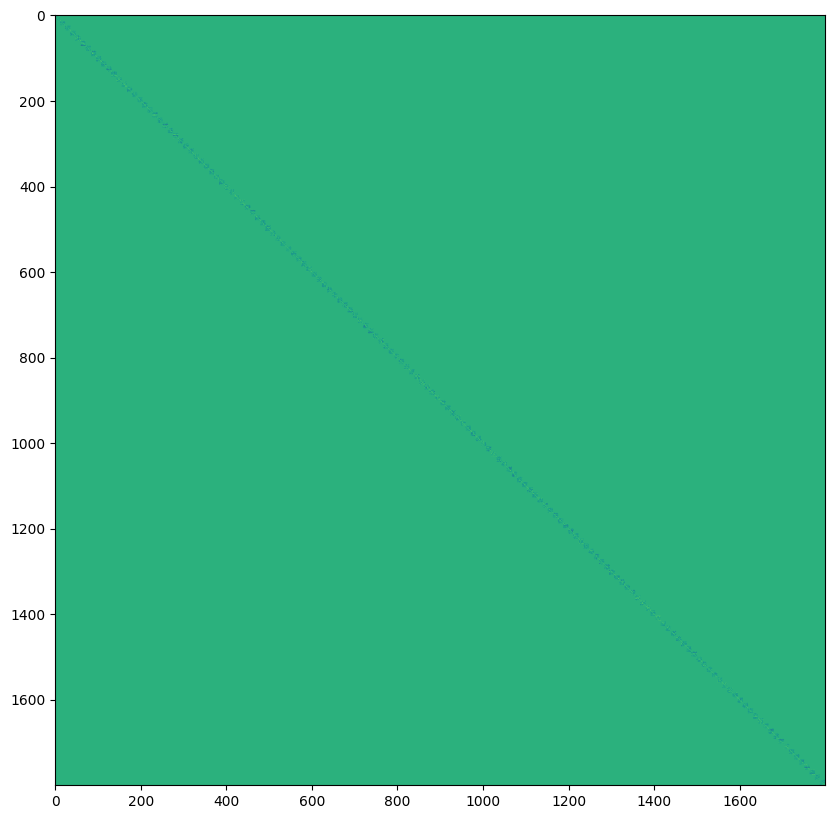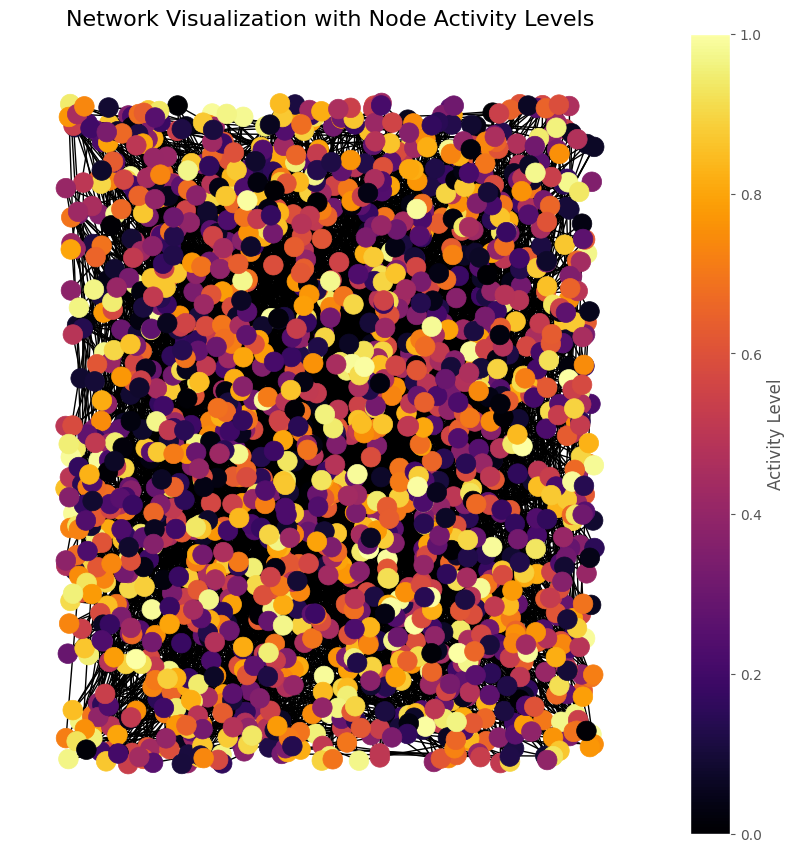Notebook source code: notebooks/11_visualize_rnn.ipynb
Set up + Imports#
In [1]:
import setup
setup.main()
%load_ext autoreload
%autoreload 2
%load_ext jupyter_black
import yaml
import torch
Working directory: /home/facosta/neurometry/neurometry
Directory added to path: /home/facosta/neurometry
Directory added to path: /home/facosta/neurometry/neurometry
Specify run name
In [2]:
# run_name = "run_tus9d935_s_0=1_sigma_saliency=0.05_x_saliency=0.5"
run_name = "run_smmlsb10_s_0=1_sigma_saliency=0.05_x_saliency=0.5"
In [3]:
import os
base_dir = os.path.join(os.getcwd(), "neuroai/piRNNs/models")
configs_dir = os.path.join(base_dir, "results/configs")
models_dir = os.path.join(base_dir, "results/trained_models")
In [4]:
def _load_expt_config(run_name, configs_dir):
config_file = os.path.join(configs_dir, f"{run_name}.json")
with open(config_file) as file:
return yaml.safe_load(file)
Load experiment config#
In [5]:
expt_config = _load_expt_config(run_name, configs_dir)
In [6]:
import ml_collections
def _d(**kwargs):
"""Helper of creating a config dict."""
return ml_collections.ConfigDict(initial_dictionary=kwargs)
import ml_collections
def _convert_config(normal_config):
"""Convert a normal dictionary to ml_collections.ConfigDict.
Parameters
----------
normal_config : dict
Configuration dictionary.
Returns
-------
ml_collections.ConfigDict
Converted configuration dictionary.
"""
config = ml_collections.ConfigDict()
# Training config
config.train = {
"load_pretrain": normal_config["load_pretrain"],
"pretrain_path": normal_config["pretrain_path"],
"num_steps_train": normal_config["num_steps_train"],
"lr": normal_config["lr"],
"lr_decay_from": normal_config["lr_decay_from"],
"steps_per_logging": normal_config["steps_per_logging"],
"steps_per_large_logging": normal_config["steps_per_large_logging"],
"steps_per_integration": normal_config["steps_per_integration"],
"norm_v": normal_config["norm_v"],
"positive_v": normal_config["positive_v"],
"positive_u": normal_config["positive_u"],
"optimizer_type": normal_config["optimizer_type"],
}
# Simulated data config
config.data = {
"max_dr_trans": normal_config["max_dr_trans"],
"max_dr_isometry": normal_config["max_dr_isometry"],
"batch_size": normal_config["batch_size"],
"sigma_data": normal_config["sigma_data"],
"add_dx_0": normal_config["add_dx_0"],
"small_int": normal_config["small_int"],
}
# Model parameter config
config.model = {
"freeze_decoder": normal_config.get("freeze_decoder", False),
"trans_type": normal_config["trans_type"],
"rnn_step": normal_config["rnn_step"],
"num_grid": normal_config["num_grid"],
"num_neurons": normal_config["num_neurons"],
"block_size": normal_config["block_size"],
"sigma": normal_config["sigma"],
"w_kernel": normal_config["w_kernel"],
"w_trans": normal_config["w_trans"],
"w_isometry": normal_config["w_isometry"],
"w_reg_u": normal_config["w_reg_u"],
"reg_decay_until": normal_config["reg_decay_until"],
"adaptive_dr": normal_config["adaptive_dr"],
"s_0": normal_config["s_0"],
"x_saliency": normal_config["x_saliency"],
"sigma_saliency": normal_config["sigma_saliency"],
"reward_step": normal_config["reward_step"],
"saliency_type": normal_config["saliency_type"],
}
# Path integration config
config.integration = {
"n_inte_step": normal_config["n_inte_step"],
"n_traj": normal_config["n_traj"],
"n_inte_step_vis": normal_config["n_inte_step_vis"],
"n_traj_vis": normal_config["n_traj_vis"],
}
return config
Load Trained Model#
In [7]:
from neurometry.neuroai.piRNNs.models import model
config = _convert_config(expt_config)
model_config = model.GridCellConfig(**config.model)
device = "cuda"
model = model.GridCell(model_config).to(device)
In [8]:
trained_model_path = os.path.join(models_dir, f"{run_name}_model.pt")
trained_model = torch.load(trained_model_path, map_location=device)
model.load_state_dict(trained_model["state_dict"])
model.eval()
Out [8]:
GridCell(
(encoder): Encoder()
(decoder): Decoder()
(trans): TransformNonlinear(
(nonlinear): ReLU()
)
)
In [9]:
for name, param in model.named_parameters():
print(name, param.shape)
encoder.v torch.Size([1800, 40, 40])
decoder.u torch.Size([1800, 40, 40])
trans.A_modules torch.Size([150, 12, 12])
trans.B_modules torch.Size([1800, 2])
trans.b torch.Size([])
In [10]:
A = torch.block_diag(*model.trans.A_modules)
In [11]:
import matplotlib.pyplot as plt
A = A.detach().cpu().numpy()
# visualize A
plt.figure(figsize=(10, 10))
plt.imshow(A, cmap="viridis")
# save figure
plt.savefig("A.png")

Load evaluation data (trajectories)#
In [12]:
config.integration.n_inte_step = 150
print(config.integration)
n_inte_step: 150
n_inte_step_vis: 50
n_traj: 100
n_traj_vis: 5
In [21]:
def print_dict_info(d, indent=0):
for key, value in d.items():
print(" " * indent + f"{key}: {type(value).__name__}", end="")
if isinstance(value, dict):
print()
print_dict_info(value, indent + 1)
elif isinstance(value, np.ndarray):
print(f" (shape: {value.shape})")
elif torch.is_tensor(value):
print(f" (shape: {value.shape})")
else:
print()
In [41]:
from neurometry.neuroai.piRNNs.models import input_pipeline
import numpy as np
rng = np.random.default_rng()
config.model.adaptive_dr = True
config.model.block_size = 1800
train_dataset_adapt = input_pipeline.TrainDataset(rng, config.data, config.model)
train_iter_adapt = iter(train_dataset_adapt)
train_batch_adapt = next(train_iter_adapt)
print_dict_info(train_batch_adapt)
kernel: dict
x: ndarray (shape: (10000, 2))
x_prime: ndarray (shape: (10000, 2))
trans_rnn: dict
traj: ndarray (shape: (100, 11, 2))
isometry_adaptive: dict
x: ndarray (shape: (10000, 1, 2))
x_plus_dx1: ndarray (shape: (10000, 1, 2))
x_plus_dx2: ndarray (shape: (10000, 1, 2))
In [ ]:
x_0 = train_batch_adapt["isometry_adaptive"]["x"][:, 0, :]
dx_0 = train_batch_adapt["isometry_adaptive"]["x_plus_dx1"][:, 0, :] - x_0
x_1 = train_batch_adapt["isometry_adaptive"]["x"][:, 1, :]
dx_1 = train_batch_adapt["isometry_adaptive"]["x_plus_dx1"][:, 1, :] - x_1
plt.hist(dx_0.flatten(), bins=100, alpha=0.5, label="dx_0")
plt.hist(dx_1.flatten(), bins=100, alpha=0.5, label="dx_1");
# do the same thing but for multiple index values in a for loop
In [38]:
for i in range(10):
x_i = train_batch_adapt["isometry_adaptive"]["x"][:, 15 * i, :]
dx_i = train_batch_adapt["isometry_adaptive"]["x_plus_dx1"][:, 15 * i, :] - x_i
plt.hist(dx_i.flatten(), bins=100, alpha=0.5, label=f"dx_{i}")

In [31]:
train_batch_adapt["isometry_adaptive"]["x"][:, 1, :]
Out [31]:
array([[24.52139421, 30.73574212],
[21.98446523, 14.77544732],
[13.70410994, 5.45291573],
...,
[25.41605999, 17.8689254 ],
[ 2.59260532, 12.85095202],
[12.92990036, 10.48709014]])
In [24]:
config.model.adaptive_dr = False
train_dataset = input_pipeline.TrainDataset(rng, config.data, config.model)
train_iter = iter(train_dataset)
train_batch = next(train_iter)
print_dict_info(train_batch)
kernel: dict
x: ndarray (shape: (10000, 2))
x_prime: ndarray (shape: (10000, 2))
trans_rnn: dict
traj: ndarray (shape: (100, 11, 2))
isometry: dict
x: ndarray (shape: (10000, 2))
x_plus_dx1: ndarray (shape: (10000, 2))
x_plus_dx2: ndarray (shape: (10000, 2))
In [39]:
config.model.num_neurons
Out [39]:
1800
In [40]:
config.model.block_size
Out [40]:
12
In [163]:
import numpy as np
from neurometry.neuroai.piRNNs.models import input_pipeline
import neurometry.neuroai.piRNNs.models.utils as utils
rng = np.random.default_rng()
eval_dataset = input_pipeline.EvalDataset(
rng, config.integration, config.data.max_dr_trans, config.model.num_grid
)
eval_iter = iter(eval_dataset)
eval_data = utils.dict_to_device(next(eval_iter), device)
In [164]:
path_integration_output = model.path_integration(eval_data["traj"]["traj"])
err, traj_real, traj_pred, activity, heatmaps = path_integration_output.values()
traj_pred_vanilla = traj_pred["vanilla"]
traj_pred_reencode = traj_pred["reencode"]
traj_real = traj_real.cpu().numpy()
traj_pred_vanilla = traj_pred_vanilla.cpu().numpy()
traj_pred_reencode = traj_pred_reencode.cpu().numpy()
errors = err["err_vanilla"].cpu().numpy()
activity = activity["vanilla"].detach().cpu().numpy()
In [165]:
traj_predicted = traj_pred_vanilla
In [166]:
import numpy as np
import matplotlib.pyplot as plt
import matplotlib.animation as animation
from IPython.display import HTML
traj_idx = 0
num_trajectories = traj_real.shape[0]
num_steps = traj_real.shape[1]
num_units = activity.shape[2]
max_x = (
max(np.max(traj_real[traj_idx, :, 0]), np.max(traj_predicted[traj_idx, :, 0])) + 1
)
max_y = (
max(np.max(traj_real[traj_idx, :, 1]), np.max(traj_predicted[traj_idx, :, 1])) + 1
)
min_x = (
min(np.min(traj_real[traj_idx, :, 0]), np.min(traj_predicted[traj_idx, :, 0])) - 1
)
min_y = (
min(np.min(traj_real[traj_idx, :, 1]), np.min(traj_predicted[traj_idx, :, 1])) - 1
)
plt.style.use("ggplot")
def animate(i, traj_idx):
ax1.cla() # Clear current plot for trajectory comparison
ax2.cla() # Clear current plot for error plot
ax3.cla() # Clear current plot for activity plot
traj_real_single = traj_real[traj_idx]
traj_pred_single = traj_predicted[traj_idx]
# Plot real trajectory
ax1.plot(
traj_real_single[:i, 0],
traj_real_single[:i, 1],
"b-",
alpha=0.5,
label="Real Traj",
linewidth=2,
) # Plot trail with reduced opacity
ax1.plot(
traj_real_single[i, 0], traj_real_single[i, 1], "bo", markersize=10
) # Plot current point
# Plot predicted trajectory
ax1.plot(
traj_pred_single[:i, 0],
traj_pred_single[:i, 1],
"r-",
alpha=0.5,
label="Pred Traj",
linewidth=2,
) # Plot trail with reduced opacity
ax1.plot(
traj_pred_single[i, 0], traj_pred_single[i, 1], "ro", markersize=10
) # Plot current point
ax1.set_xlim(min_x, max_x) # Adjust x-axis limits as needed
ax1.set_ylim(min_y, max_y) # Adjust y-axis limits as needed
ax1.set_title(
f"Real vs Predicted Trajectory at Time t={i}", fontsize=16
) # Set title for the frame
ax1.set_xlabel("X Coordinate", fontsize=14)
ax1.set_ylabel("Y Coordinate", fontsize=14)
ax1.legend(loc="upper right", fontsize=12)
ax1.grid(True)
ax1.annotate(
"Real",
xy=(traj_real_single[i, 0], traj_real_single[i, 1]),
xytext=(5, 5),
textcoords="offset points",
color="blue",
)
ax1.annotate(
"Pred",
xy=(traj_pred_single[i, 0], traj_pred_single[i, 1]),
xytext=(5, 5),
textcoords="offset points",
color="red",
)
# Plot the error over time
ax2.plot(errors[traj_idx, :i], "k-", label="Error")
ax2.set_xlim(0, num_steps)
ax2.set_ylim(0, np.max(1.1 * errors[traj_idx, :]))
ax2.set_title("Error over Time", fontsize=16)
ax2.set_xlabel("Time Step", fontsize=14)
ax2.set_ylabel("Error", fontsize=14)
ax2.grid(True)
ax2.legend(loc="upper right", fontsize=12)
# Plot the activity as a heatmap
activity_single = activity[traj_idx, i, :].reshape(45, -1)
cax = ax3.imshow(
activity_single, aspect="auto", cmap="inferno", interpolation="none"
)
ax3.set_title(f"Network activity at time t={i}", fontsize=16)
ax3.grid(False)
# Turn off the axis labels
ax3.set_xticks([])
ax3.set_yticks([])
# Specify which trajectory index you want to visualize
traj_idx_to_visualize = (
0 # Change this to the index of the trajectory you want to visualize
)
# Set up figure and animation
fig = plt.figure(figsize=(20, 10), dpi=150)
gs = fig.add_gridspec(2, 2, height_ratios=[3, 1])
ax1 = fig.add_subplot(gs[0, 0]) # Top left
ax3 = fig.add_subplot(gs[0, 1]) # Top right
ax2 = fig.add_subplot(gs[1, :]) # Bottom, spanning both columns
ani = animation.FuncAnimation(
fig, animate, frames=num_steps, fargs=(traj_idx_to_visualize,), interval=100
)
# Display animation inline in Jupyter Notebook
%matplotlib notebook
HTML(ani.to_html5_video())
Out [166]:
In [167]:
# save animation
ani.save("path_integration.gif", writer="pillow", fps=10)
In [ ]:
from neurometry.dimension.dim_reduction import (
plot_pca_projections,
plot_2d_manifold_projections,
)
total_activity = activity.reshape(-1, 1800)
plot_pca_projections(total_activity, total_activity, "", "", 4)
# plot_2d_manifold_projections(total_activity, total_activity)
In [120]:
import numpy as np
import matplotlib.pyplot as plt
import matplotlib.animation as animation
from IPython.display import HTML
traj_idx = 0
num_trajectories = traj_real.shape[0]
num_steps = traj_real.shape[1]
num_units = activity.shape[2]
max_x = (
max(np.max(traj_real[traj_idx, :, 0]), np.max(traj_predicted[traj_idx, :, 0])) + 1
)
max_y = (
max(np.max(traj_real[traj_idx, :, 1]), np.max(traj_predicted[traj_idx, :, 1])) + 1
)
min_x = (
min(np.min(traj_real[traj_idx, :, 0]), np.min(traj_predicted[traj_idx, :, 0])) - 1
)
min_y = (
min(np.min(traj_real[traj_idx, :, 1]), np.min(traj_predicted[traj_idx, :, 1])) - 1
)
plt.style.use("ggplot")
def animate(i, traj_idx):
ax1.cla() # Clear current plot for trajectory comparison
ax2.cla() # Clear current plot for error plot
ax3.cla() # Clear current plot for activity plot
traj_real_single = traj_real[traj_idx]
traj_pred_single = traj_predicted[traj_idx]
# Plot real trajectory
ax1.plot(
traj_real_single[:i, 0],
traj_real_single[:i, 1],
"b-",
alpha=0.5,
label="Real Traj",
linewidth=2,
) # Plot trail with reduced opacity
ax1.plot(
traj_real_single[i, 0], traj_real_single[i, 1], "bo", markersize=10
) # Plot current point
# Plot predicted trajectory
ax1.plot(
traj_pred_single[:i, 0],
traj_pred_single[:i, 1],
"r-",
alpha=0.5,
label="Pred Traj",
linewidth=2,
) # Plot trail with reduced opacity
ax1.plot(
traj_pred_single[i, 0], traj_pred_single[i, 1], "ro", markersize=10
) # Plot current point
ax1.set_xlim(min_x, max_x) # Adjust x-axis limits as needed
ax1.set_ylim(min_y, max_y) # Adjust y-axis limits as needed
ax1.set_title(
f"Real vs Predicted Trajectory at Time t={i}", fontsize=16
) # Set title for the frame
ax1.set_xlabel("X Coordinate", fontsize=14)
ax1.set_ylabel("Y Coordinate", fontsize=14)
ax1.legend(loc="upper right", fontsize=12)
ax1.grid(True)
ax1.annotate(
"Real",
xy=(traj_real_single[i, 0], traj_real_single[i, 1]),
xytext=(5, 5),
textcoords="offset points",
color="blue",
)
ax1.annotate(
"Pred",
xy=(traj_pred_single[i, 0], traj_pred_single[i, 1]),
xytext=(5, 5),
textcoords="offset points",
color="red",
)
# Plot the error over time
ax2.plot(errors[traj_idx, :i], "k-", label="Error")
ax2.set_xlim(0, num_steps)
ax2.set_ylim(0, np.max(1.1 * errors[traj_idx, :]))
ax2.set_title("Error over Time", fontsize=16)
ax2.set_xlabel("Time Step", fontsize=14)
ax2.set_ylabel("Error", fontsize=14)
ax2.grid(True)
ax2.legend(loc="upper right", fontsize=12)
# Plot the activity as a heatmap
activity_single = activity[traj_idx, i, :].reshape(45, -1)
cax = ax3.imshow(
activity_single, aspect="auto", cmap="inferno", interpolation="none"
)
ax3.set_title(f"Network activity at time t={i}", fontsize=16)
# ax3.set_xlabel("Time Step", fontsize=14)
# ax3.set_ylabel("Units", fontsize=14)
ax3.grid(False)
# turn off the axis labels
ax3.set_xticks([])
ax3.set_yticks([])
# fig.colorbar(cax, ax=ax3, orientation="vertical")
# Specify which trajectory index you want to visualize
traj_idx_to_visualize = (
0 # Change this to the index of the trajectory you want to visualize
)
# Set up figure and animation
fig, (ax1, ax2, ax3) = plt.subplots(1, 3, figsize=(24, 8), dpi=150)
ani = animation.FuncAnimation(
fig, animate, frames=num_steps, fargs=(traj_idx_to_visualize,), interval=100
)
# Display animation inline in Jupyter Notebook
%matplotlib notebook
HTML(ani.to_html5_video())
---------------------------------------------------------------------------
IndexError Traceback (most recent call last)
Cell In[120], line 10
8 num_trajectories = traj_real.shape[0]
9 num_steps = traj_real.shape[1]
---> 10 num_units = activity.shape[2]
11 max_x = (
12 max(np.max(traj_real[traj_idx, :, 0]), np.max(traj_predicted[traj_idx, :, 0])) + 1
13 )
14 max_y = (
15 max(np.max(traj_real[traj_idx, :, 1]), np.max(traj_predicted[traj_idx, :, 1])) + 1
16 )
IndexError: tuple index out of range
In [75]:
import numpy as np
import matplotlib.pyplot as plt
import networkx as nx
%matplotlib inline
# Create a grid graph
G = nx.grid_2d_graph(45, 40) # Create a 5x5 grid graph
# Generate random activity levels for each node
np.random.seed(42)
activity_levels = np.random.rand(len(G.nodes()))
# Normalize activity levels for color scaling
normalized_activity = activity_levels / np.max(activity_levels)
# Create a position layout for the nodes
# pos = {node: (node[1], -node[0]) for node in G.nodes()} # Layout in 2D grid form
pos = nx.random_layout(G)
# Draw the graph with node colors representing activity levels
plt.figure(figsize=(8, 8))
nx.draw(
G,
pos,
node_color=normalized_activity,
node_size=200,
cmap="inferno",
with_labels=False,
)
plt.title("Network Visualization with Node Activity Levels", fontsize=16)
plt.colorbar(
plt.cm.ScalarMappable(cmap="inferno"), ax=plt.gca(), label="Activity Level"
)
plt.show()

In [ ]: